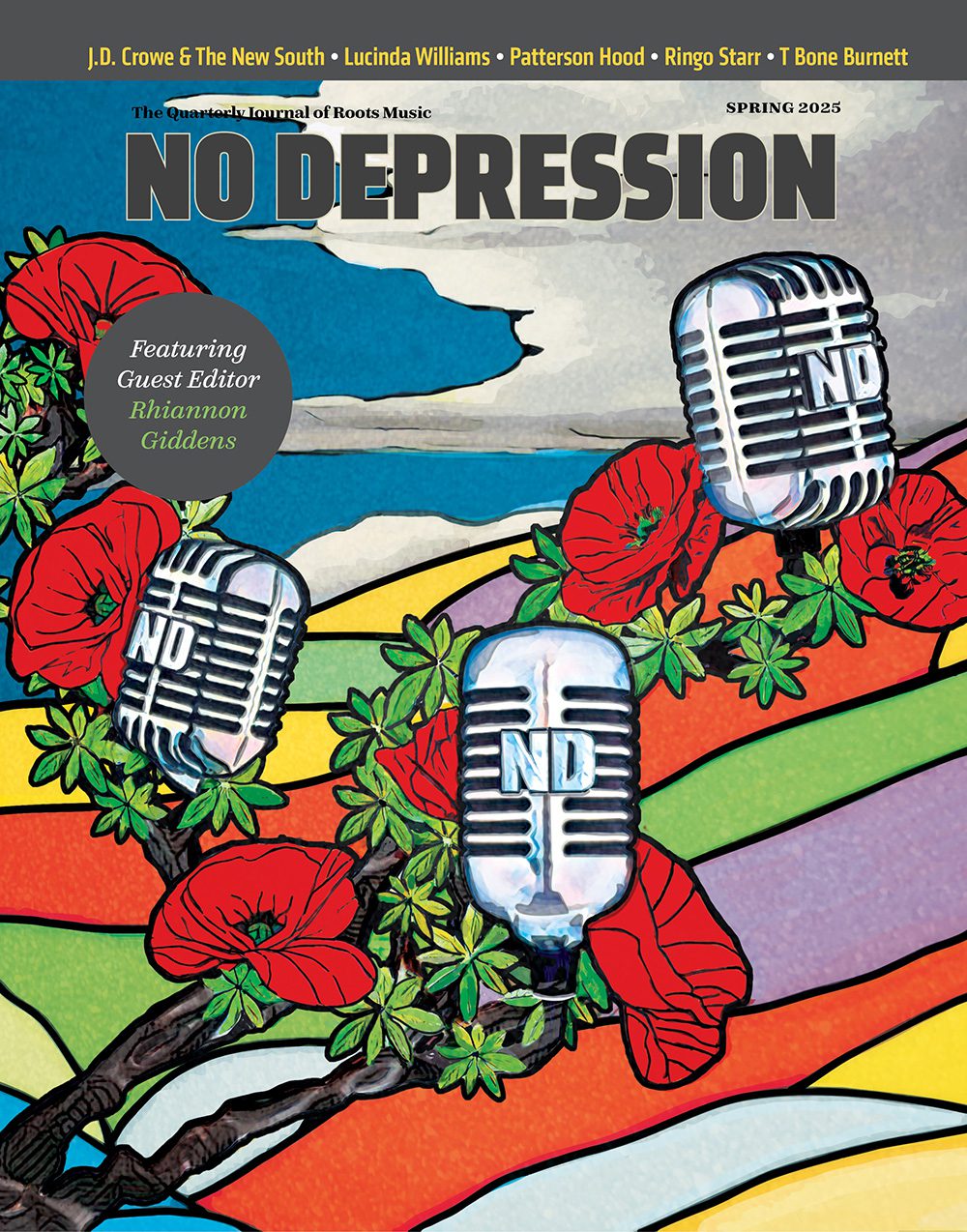Ricki Lee Jones – The Sermon on Exposition Boulevard
Rickie Lee Jones has never quite found her footing in middle age. Like her earliest model, Joni Mitchell (but unlike other inspirations Waits, Dylan and Van), she made her finest music out of youthful romanticism. Her last great album, Flying Cowboys, was completed when she was 34; the three-disc overview Duchess Of Coolsville (despite a ridiculous alphabetical sequence) only served to point out the distance between her early achievements and late efforts such as 2003’s nearly restored but still scattered The Evening Of My Best Day.
Recently Jones has focused on political organizing, especially the web-based community Furniture For The People. Those progressive passions fuel her eighth album of original material. The initial concept, begun in 2005, was to interpret selections from Lee Cantelon’s book The Words (a contemporary rendering of the Gospels). The project languished for nearly a year and was finished with the intervention of producer Rob Schnapf (known for his work with Beck, Elliott Smith and the Vines). Jones ultimately came up with her own version of Cantelon’s modernized Christ, sometimes strapping on the sandals and wandering wherever inspiration led, sometimes writing new songs start to finish (and adding one written for the film Friends With Money).
Jones’ improvisational approach has always had hazards, chief among them formlessness. When she finds a worthy hook, even just a single line — as on “Nobody Knows My Name” — her scats and riffs become more than skillful syllables. They become windows to memories and analogs to emotions. On The Evening Of My Best Day, she threw herself into the able hands of studio pros and jazz exiles such as Bill Frissell, Neil Larson and Kenny Wollesen.
This time she opts for different kind of cast, including bassist Joey Maramba, guitarist Bernie Larson, drummers Jay Bellerose and Joey Waronker (son of her very first producer Lenny Waronker), and chief collaborator and guitarist Peter Atanasoff. Their approach is more garage than chamber, more modal than meditative. On “Gethsemane” and “Falling Up”, they get the incessant forward movement of the Velvet Underground’s “What’s Going On”, and on “Tried To Be A Man”, they dial up the fuzztone and just rock, harder than Jones ever has.
But as fine and furious as this band can be, the album rises and falls on the ways Jones molds Cantelon’s original vision. If the current evangelical climate would profit from more reminders of Jesus’ humanity and radical example, it’s less clear how or if Jones does. Adopting Christ as a persona tends to exacerbate her quasi-mystical pretensions — as on the slow, brooding narration “Lamp Of My Body” or the clunky punk skat “Donkey Ride” — and it’s doubtful the world needs another comparison between Elvis and the Son of God, let alone another song about the King’s favorite automobile (“Elvis Cadillac”). Four minutes of fake speaking in tongues over a fake Middle Eastern groove (“Road To Emmaus”) is just indulgence.
But sometimes the gospel intersects with the material world in a way that feels, to quote Van Morrison, really, really real. “How do you pray in a world like this?” she asks on “Where I Like It Best”, and then dissolves into questions that don’t have answers, save the intensity of her own very genuine yet conflicted spirituality. On “Circle In The Sand”, the album’s best track, she puts a wide-open groove behind a personal call for her own soul to “rise like an animal from the ruin.”
Jones’ new songs are quite literally private prayers. It takes the coalescence of her still astonishingly expressive voice and a sympathetic, locked-tight band to transform those confessions. When that happens, resurrection isn’t too strong a word to describe her return.


